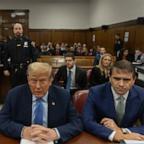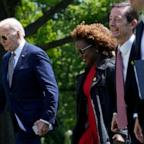Study Finds Voting Process Problematic
July 17 -- Every civics class student learns that every vote counts. But as we learned last year, not every vote gets counted.
A study by the California Institute of Technology and the Massachusetts Institute of Technology says that between 4 million and 6 million Americans went to the polls last year intending to vote in the presidential election, but either didn't made it into the voting booth or cast ballots that were disregarded due to faulty equipment, voter errors or other problems at the polling place.
The Voting Technology Project, funded by the Carnegie Corporation, recommended that election officials stop using punch-card and lever voting machines and improve voter registration and polling place practices in order to cut down on uncounted votes.
The problem did not begin last year, either. The researchers say about 2 percent of the votes cast in the last four presidential elections went uncounted — a discrepancy bigger than last year's margin in four states: Florida, Iowa, New Mexico and Wisconsin.
"It seems like a small number, but it is an enormous number," says R. Michael Alvarez, a Caltech political scientist. "It obviously tipped the scales in this election and it could tip the scales of many elections."
Registration Process Blamed
The biggest problem, the researchers say, is in the voting registration system.
About 3 million people who wanted to vote were denied their right last year because of the problems with their registration — not being on the rolls when they showed up at the polls or showing up at the wrong polling place. Another 1 million were discouraged by long lines and left the polling place.
And between 1.5 million and 2 million cast ballots that were mismarked due to faulty or confusing equipment.
The worst offenders were the now infamous punch-card ballots, producing a 2.5 percent error rate. Lever machines, first developed in the late 1800s and for many years the standard across the country, had a relatively low error rate of 1.5 percent in presidential races — but had bigger problems when it came to other so-called "down-ballot" races. In races for the U.S. Senate or governor's offices, the error rate rose to 7.6 percent.




